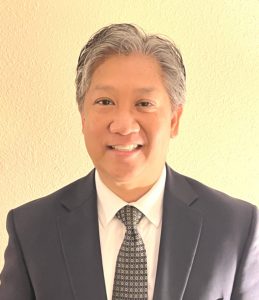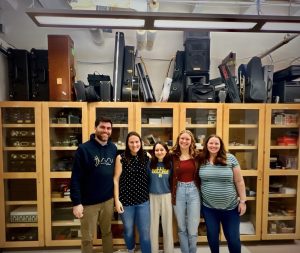A new general education program will be introduced in Fall 2013, replacing the current “alphabet soup” model.
Always striving to be a pioneer of innovation, Rollins has designed a new general education curriculum geared towards creating not just graduates, but global citizens. The program will be implemented in Fall 2013, but the process to institute it began seven years ago.
A new general education program was first proposed by the Academic Affairs Committee. According to Mark Anderson, Professor of Mathematics and chair of the committee at the time, a consensus was made that “the faculty was ready to start thinking about a new curriculum.”
Surveys were administrated proposing a change and revealed two-thirds of all faculty supported the committee. “It was faculty driven. Administration just facilitated things,” Anderson said. Following this, research was conducted on several liberal arts schools focusing on one central question: What should general education look like? Based on the findings of the research, the Rollins Plan was conceived.
Instituted in 2009, the Rollins Plan was a pilot program used to test the findings of the research. Ninety students volunteered for the program and were asked to choose one of two thematic ideas: Revolution or Global Challenges.
The thematic ideas have been referred to as global neighborhoods, stemming from Rollins’ mission to build global citizenship and academic communities. Seven interdisciplinary general education courses branched from each of the thematic ideas. The courses covered four basic disciplines: the arts, humanities, natural sciences and social sciences. In addition to the general education courses, students enrolled in the Rollins Plan took both elective courses and courses in their declared major.
Of the 90 students initially enrolled, more than half dropped the pilot program, reverting back to the current general education curriculum. Some students even transferred from Rollins completely, according to Anderson, who indicated two key weaknesses in the program: scheduling and the limited options for courses.
Due to the Rollins Plan being a pilot program, students were not offered enough choices for classes and class times did not allow much flexibility. This made it difficult for students to fit all of their classes into their schedules. Another issue was that “students coming into the program had already completed some of their [general education requirements],” Anderson said.
“They found it easier to continue the current program than to start up the new one.” Anderson admits that “in some sense, the program didn’t go that well,” but ensures that the new general education curriculum, which is based on the Rollins Plan, has been “tweaked” to fix its initial weaknesses.
As part of the plan for the new curriculum, the number of required general education courses will be reduced from twelve to eight. Included in the eight courses, three will be competency courses, one for each basic discipline: writing, math and foreign language. Students will complete the three competencies during fall semester of freshman year along with their RCC course.
In the spring semester, students will choose from a selection of thematic ideas from which their remaining five general education courses will stem. Choosing a theme, however, differs from choosing a major: the themes are quite broad and students will be able to transfer themes. “An option is even available to take one course in a theme outside of your own, just to explore,” Anderson said. “This way, you’re not committing yourself too much.”
The courses in each theme will be interdisciplinary: social sciences, arts, science, math and humanities will be covered. A final Capstone course will mark the completion of the general education requirements and tie all disciplines together.

Gloria Cook, Associate Professor of Piano and part of the Academic Affairs Committee that initially proposed the curriculum change, claims that “the new interdisciplinary curriculum will be the flagship of education at Rollins; we will be known for this somewhere.”
According to Anderson, the aim of the new curriculum is to “teach students how to integrate knowledge across disciplines and build academic communities.” The last time any change was made to the curriculum was in the 1980s when the “alphabet soup” system was implemented. At the time, “the program was cutting edge,” said Cook; but as Anderson stated, “Rollins’ mission statement has changed since the 1980s. Our curriculum has to change as well.”
Currently enrolled students will continue to pursue the “alphabet soup” curriculum, completing the 12 general education requirements along with the 140 credit hours needed to graduate. All general education courses part of the current curriculum will continue to be offered, but will slowly taper off as the new curriculum is implemented in increments.
Current students will take courses separate from incoming students enrolled in the new curriculum. There will, however, be an
option for current students to take courses from the new curriculum and count them as electives. However, “incoming students actually enrolled in the new curriculum will have first priority” explained Anderson.
Cook expressed her concerns about scheduling for current students: because professors and classroom spaces have to be allotted to accommodate both curriculums for the next three years, “there may eventually be fewer classes for current students to choose from,” creating some scheduling issues.
Cook explains that “this is a logistic that [Rollins] will have to work out.” According to Debra Wellman, Dean of Arts and Sciences, “Nobody is not going to graduate” because of scheduling issues. Students in the current curriculum who have general education requirements to complete will be monitored to ensure the courses they have left to take will not be tapered off before they complete them.
Grants to fund the transition into the new curriculum are in the process of being sought out. According to Anderson, money will be needed to “send faculty to retraining programs so they can learn how to teach interdisciplinary courses.” Anderson ensures, though, that “the transition is not a huge expense. It will only cost a few hundred thousand dollars.”
Despite the number of required credit hours being reduced from 140 to 128, the cost of tuition will not decrease. Steve Booker, Director of Financial Aid, justified this by explaining that “students don’t have a limitation on the number of courses that they can take.
Some institutions charge students a fee for courses beyond the required amount. Rollins does not.” However, this fee-less system has already been in place with the current curriculum requiring 140 credit hours. Reducing the number of required credit hours will, according to a document labeled Institutional Planning: Consolidated Planning Priorities, “utilize cost savings.”
This document was distributed to faculty during their most recent meeting; Wellman agrees this reduction will be “budget relieving.”















Be First to Comment